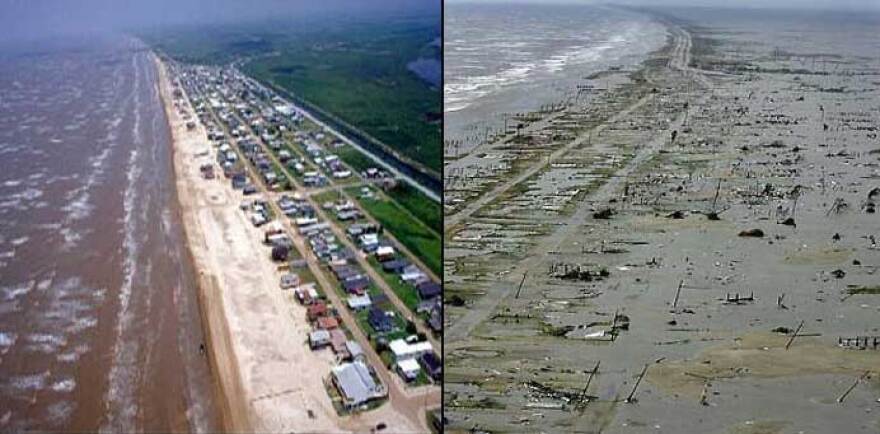Ten years ago today, the second of 2005’s hurricane one-two punches hit southwest Louisiana.
“Hurricane Rita is aiming at Louisiana. It will impact much of the coastline from the Texas border over to St. Mary Parish,” then-Governor Kathleen Blanco warned the day before landfall.
I spoke with Governor Blanco recently, and we talked about a mutual moment from Rita, which arrived less than one month after her disastrous predecessor, Katrina. I told her then I was worried about my daughter, who lived in Lake Charles, and didn’t want to evacuate for Rita. Governor Blanco said to tell her to “write her name and social security number on her arm in indelible marker, so we can identify her body afterwards.”
In retrospect, Blanco says, “It was unthinkable for me that anyone should even consider staying behind to protect their properties. It just made me so frustrated!” she said, with an ironic laugh. “I just could not believe it.”
Because Rita’s devastation was somewhat eclipsed by Katrina, many in southwest louisiana still refer to Rita as the “forgotten storm”.
“It may not have generated the wall-to-wall television coverage or national media attention of Hurricane Katrina, but its effect was just as real and just as damaging to our state’s spirit,” Congressman Charles Boustany said yesterday.
For him, it’s not forgotten. He was in his first term representing southwest Louisiana in Washington, when Rita did her damage
“Hurricane Rita was the fourth most powerful storm ever formed in the Atlantic, causing an estimated damage of $12-billion. The storm flattened communities and displaced thousands of families from their homes.”
Boustany credits the “hard work, spirit of self-reliance, and a never-give-up attitude” with making the recovery from Rita as complete as it is today. Although now, ten years later, southwest Louisiana is dealing with a housing shortage again — but not because of disaster. An industrial boom, fueled by construction of liquid natural gas terminals, is filling up homes and apartments and business cash registers.


